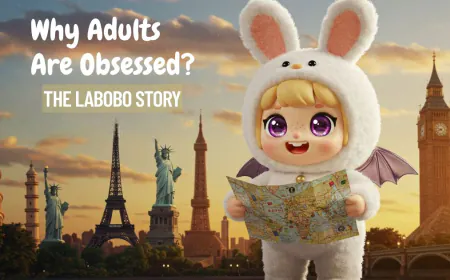The impact of culture on society and identity formation
Explore how culture shapes society and influences identity formation. Read more on the powerful role of culture on Breaking Way.

Culture is the invisible thread that weaves the fabric of our societies, shaping our beliefs, values, traditions, and behaviors. It is a complex and multifaceted concept that influences every aspect of our lives. In this 3000-word exploration of culture, we will unravel the profound impact it has on society. From its definition and components to its role in shaping our identities, we will delve deep into this intricate tapestry of human existence.
1. Defining Culture: A Multifaceted Concept
Culture, in its essence, is the collective expression of a group of people. It encompasses their shared values, beliefs, customs, traditions, and behaviors. This definition, however, only scratches the surface of a concept as intricate as culture. Culture is not a monolithic entity but a dynamic, ever-evolving construct that reflects the unique history and experiences of a community.
1.1 The Components of Culture
Culture is comprised of several key components, each playing a pivotal role in shaping the identity and behaviors of individuals within a society:
Language: Language is perhaps the most crucial element of culture. It serves as the medium through which individuals communicate, express their thoughts, and pass down their heritage. The diversity of languages across the world is a testament to the rich tapestry of human culture.
Religion: Religion can profoundly influence culture, as it shapes people's beliefs, moral values, and rituals. The religious traditions of a community often dictate their customs and celebrations.
Customs and Traditions: Customary practices and traditions are the rituals, ceremonies, and behaviors that are passed down through generations. They often define the cultural identity of a group and create a sense of continuity.
Art and Creativity: Artistic expressions, including music, literature, visual arts, and dance, are integral to culture. They capture the essence of a society's beliefs and emotions, allowing them to be shared and celebrated.
Social Norms: Social norms are the unwritten rules that govern behavior in a particular culture. They define what is considered acceptable and unacceptable within that society.
2. Cultural Diversity: A Global Kaleidoscope
The world is a tapestry of cultures, each with its unique colors, patterns, and stories. It is this diversity that makes the global human experience so rich and multifaceted. The interplay of various cultures often results in a beautiful mosaic of traditions and perspectives.
Regional and Ethnic Diversity: Across the globe, different regions and ethnic groups have their own distinct cultures. From the vibrant festivities of Brazil's Carnival to the solemnity of Japanese tea ceremonies, these unique expressions reflect the cultural tapestries that have evolved over centuries.
Globalization and Cultural Exchange: In today's interconnected world, cultures are constantly in contact with one another. This exchange can lead to the fusion of traditions, the adoption of foreign customs, and the evolution of new cultural forms.
3. The Role of Culture in Shaping Identity
Culture is the foundation upon which individual and group identities are constructed. It molds the way people perceive themselves and their place in the world. Understanding one's cultural identity is essential for a holistic sense of self.
Cultural Identity and Self-Perception: The cultural background of an individual significantly influences how they view themselves and their roles within society. It shapes their self-esteem, values, and personal aspirations.
Identity Crises and Cultural Conflicts: When individuals navigate multiple cultural identities, they may face challenges reconciling conflicting norms and values. This can lead to identity crises and a search for balance.
4. Culture's Influence on Social Norms and Values
Social norms and values are not universal; they are deeply rooted in cultural contexts. What is acceptable in one culture may be frowned upon in another. This influence is pervasive in all aspects of life, from family dynamics to gender roles.
Gender Roles and Expectations: Cultural norms dictate what is considered "appropriate" behavior for different genders. These expectations vary widely across societies, ranging from matriarchal to patriarchal structures.
Family and Social Hierarchy: Cultural values often define the structure and dynamics of families. Some cultures prioritize extended family networks, while others emphasize individual autonomy.
5. The Impact of Culture on Behavior and Communication
Cultural influences extend to how people behave and communicate. These differences can sometimes lead to misunderstandings and conflicts, but they also enrich human interactions by offering diverse perspectives.
Nonverbal Communication: The way people use nonverbal cues, such as body language and gestures, varies across cultures. What may be considered a sign of respect in one culture can be misinterpreted as rudeness in another.
Cultural Communication Styles: From direct communication to indirect and nuanced approaches, cultures have their unique communication styles. These differences can affect the success of interactions and relationships.
6. Cultural Challenges and Opportunities in the Modern World
In our rapidly globalizing world, cultures are encountering new challenges and opportunities. The following are some of the key aspects that are reshaping the cultural landscape.
Cultural Appropriation: As cultures intermingle, the issue of cultural appropriation arises. It is essential to distinguish between cultural appreciation and appropriation to respect the origins of cultural practices.
Preserving Cultural Heritage: Many cultures are at risk of disappearing due to globalization and modernization. Efforts to preserve cultural heritage are vital to maintaining human diversity.
7. Some FAQs about Navigating the Cultural Landscape :
Question: What is cultural relativism, and how does it impact our understanding of culture?
Answer: Cultural relativism is the idea that a culture should be understood and evaluated within the context of its values and beliefs. This approach helps avoid ethnocentrism and promotes tolerance and respect for cultural differences.
Question: How can individuals embrace cultural diversity?
Answer: Embracing cultural diversity can be achieved through education, travel, and open-mindedness. Learning about different cultures, experiencing them firsthand, and engaging in intercultural dialogue all contribute to embracing diversity.
Question: What are some examples of cultural stereotypes, and why are they harmful?
Answer: Cultural stereotypes are oversimplified and often inaccurate assumptions about a particular culture. They are harmful because they perpetuate bias and prejudice, leading to discrimination and misunderstanding.
Question: How can organizations promote cultural diversity and inclusion in the workplace?
Answer: Promoting cultural diversity and inclusion in the workplace involves creating a welcoming environment, offering cultural sensitivity training, and adopting inclusive policies and practices.
What's Your Reaction?


















































